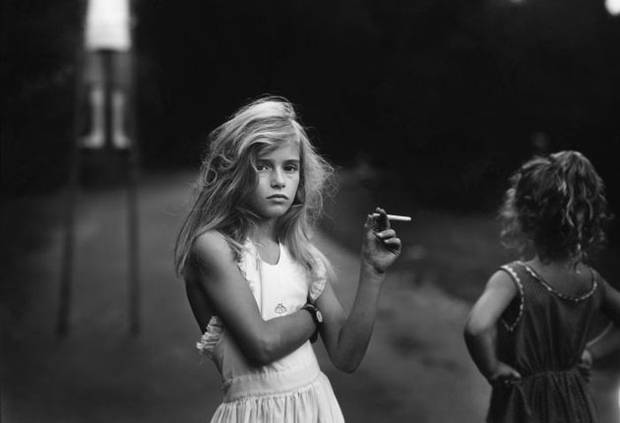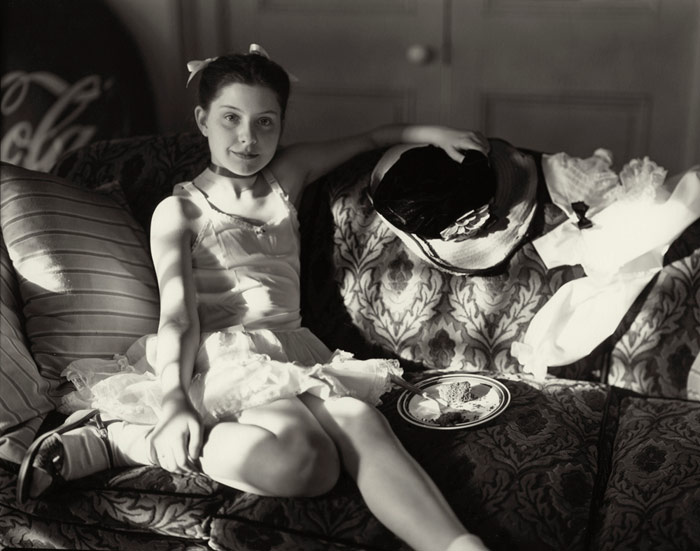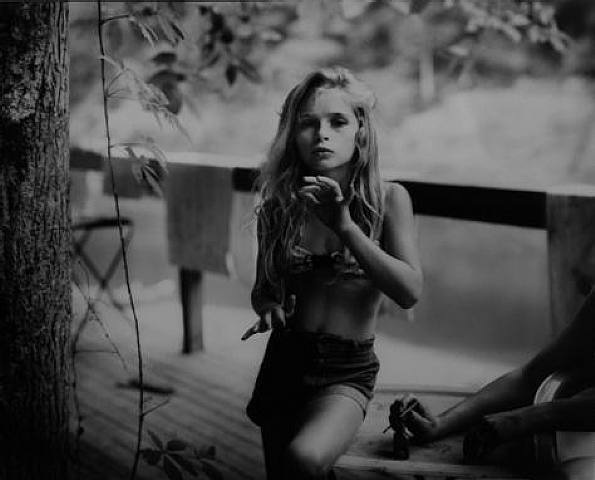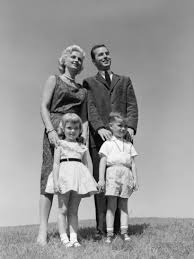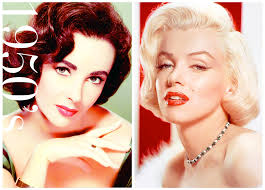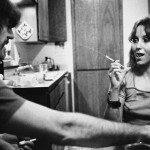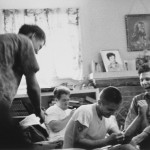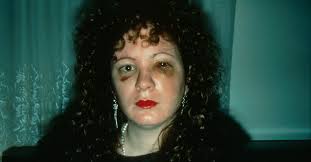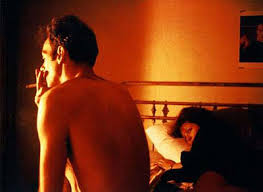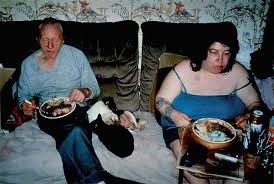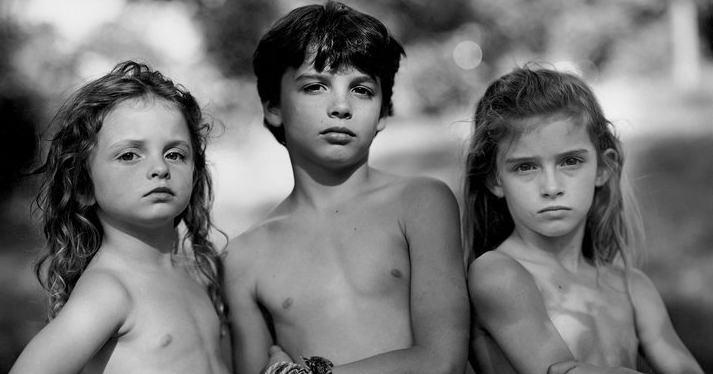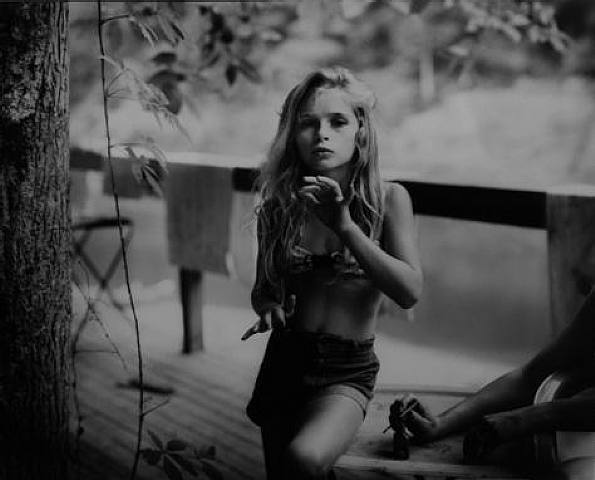In class we watched a documentary film called ‘The Genius of Photography’ and we watched the scene which is called ‘We are Family’. From this video i think that to take documentary images a key aspect is to try to get someone to open up, so then in the images you can reveal the real person. Through the images that you take you are trying to capture a feeling or an emotion that comes across in the images. For these types of images it is not about the lighting the photos that you take can look quite amateur, as long as there is some kind of meaning behind them. It can also be said that when you take a documentary image and you try to get your subject to pose for you and it is not realistic that the feeling that comes across from the image is the feeling that the person taking the photograph is feeling. So the photograph that the photographer takes project how they feel onto the subject, so in reality the image is of the photographer and not actually the person who is in the photo. When some photographers take images they like to try and give it a vernacular feel to it, this basically means traditional and that the photographer tries to take images how an ordinary person would take them, and not from a photographers perspective. This is how they make their images look amateur.
The first photographer that was mentioned in the film was Tony Vaccaro. In the late 50’s and 1960’s there was a lot of high gloss images of celebrities.
Tony Vaccaro says that celebrity portraits shows the photographers opinions on the celebrity and not how the celebrity actually views them self. As when the photographer takes the image they get the celebrity to pose and that shows the photographers views on them not their own views.
In the film one other photographer that was mentioned was Duane Micheal’s, he said that he doesn’t believe portraits and they do not tell you who the person is. I think that this is true as when you look at a portrait you cannot tell anything about the history of a person or anything about their personality. If there is a background to the image then you can maybe get the context of their life, but if not then i think the photograph is just a still image. This is why some photographers choose to take photographs of celebrities as they are pre-packaged as the media know about celebrities lives and they do not need to tell their story through one still portrait image. Pablo Picasso refused to get his portrait taken for many years until around 1966 and 1967 when he asked Tony Vaccaro to take a portrait image of him. Tony says that Picasso kept pulling different poses and Tony could tell that the images just didn’t show his personality, so he pretended to be fixing the light that was on his camera and when he was doing this Picasso relaxed and Tony took the photo. This image of Picasso was taken in 1968.
This image of Picasso shows a relaxed version of himself compared to the other portrait images that were taken of him, and that Picasso himself did not like. I think that by Clarke taking this image when Picasso didn’t realise it shows more of Picasso’s personality.
When taking documentary photography there are two view points that the image can be taken from, one is an insider, where you are apart of the culture or family of the subject that you are taking photos of. Or you can take an image from an outsiders perspective, this would be taking images of subjects who maybe do not come from the same background as you, and these people may be strangers to you. Taking photos like these can be interesting as you are documenting life from an outsiders perspective and this explore someone else’s life.
Another photographer that was mentioned was Martin Parr, his documentary photography is considered as dairy photography, this is because Parr kept a diary while he was taking his images. In Larry Clarke’s book called Tulsa there are sections in the book which show Clarke’s dairy and what he wrote in his diary. These images that are in ‘Tulsa’ are very intimate images and can be considered as an impolite genre. In these images there is drug use in the photographs, which makes the images intimate.
Nan Golding was another photographer that was mentioned in the video. Golding was a New York photographer who photographed her ‘own tribe’, this consisted of transsexual’s and images of drug taking and party animals. However Golding did not call them this she called them third gender, i think she did this so she did not discriminate them from everyone else. Golding took this images to show people how ‘third gender’ people live normal lives and she wanted this to come across in her photography. Golding considered her photographs as confessional photography and for this she was inspired by film makers when she took her images. Sometimes Golding puts herself in this images to tell a story, there is one famous image of Golding with a black eye that her boyfriend at the time gave her.
These images show part of Nan Golding’s life and show how her life was not always perfect. Nan said on the film that in a photograph there is an ‘ability to be present in the moment, but you can be there and get lost at the same time’.
Some photographers consider it that when you do not take a photograph then you do not remember the memory or the moment, so therefore they believe that is you don’t shoot you don’t remember. But also documentary photography can be seen that you only photograph what you want to remember, as sometimes you do not want to remember the memory. When taking these images it can be considered that you have to be in the mindset that you are going to take the perfect documentary image otherwise you will never take the perfect image. Black and white photographs are interesting as they show past to present in one image.
Richard Billingham is a famous photographer who photographed his drunk father, his father could drink uninterruptedly. When Billingham first started taking his photos they were to make art out of, he would use a triple print as he thought this made for more interesting paintings. So when Billingham was taking these images of his father he was not taking these from the eyes of a photographer but from the eyes of an artist. However Billingham was criticized as people said that he was photographing his parents for his own fame. Whereas i think that Billingham took the images so that he could understand his father and so he could be closer to him. I think that by him taking these images it made him more aware and try to understand why his father/family was like this.
On the other end of the scale, a photographer Sally Mann took idealistic images of her family showing them off in their best light. She took these images from an insiders perspective whereby she took image of the idealistic family life. She took these images in collaboration, as when she was photographing them she said that they need to ‘give you the picture’.
